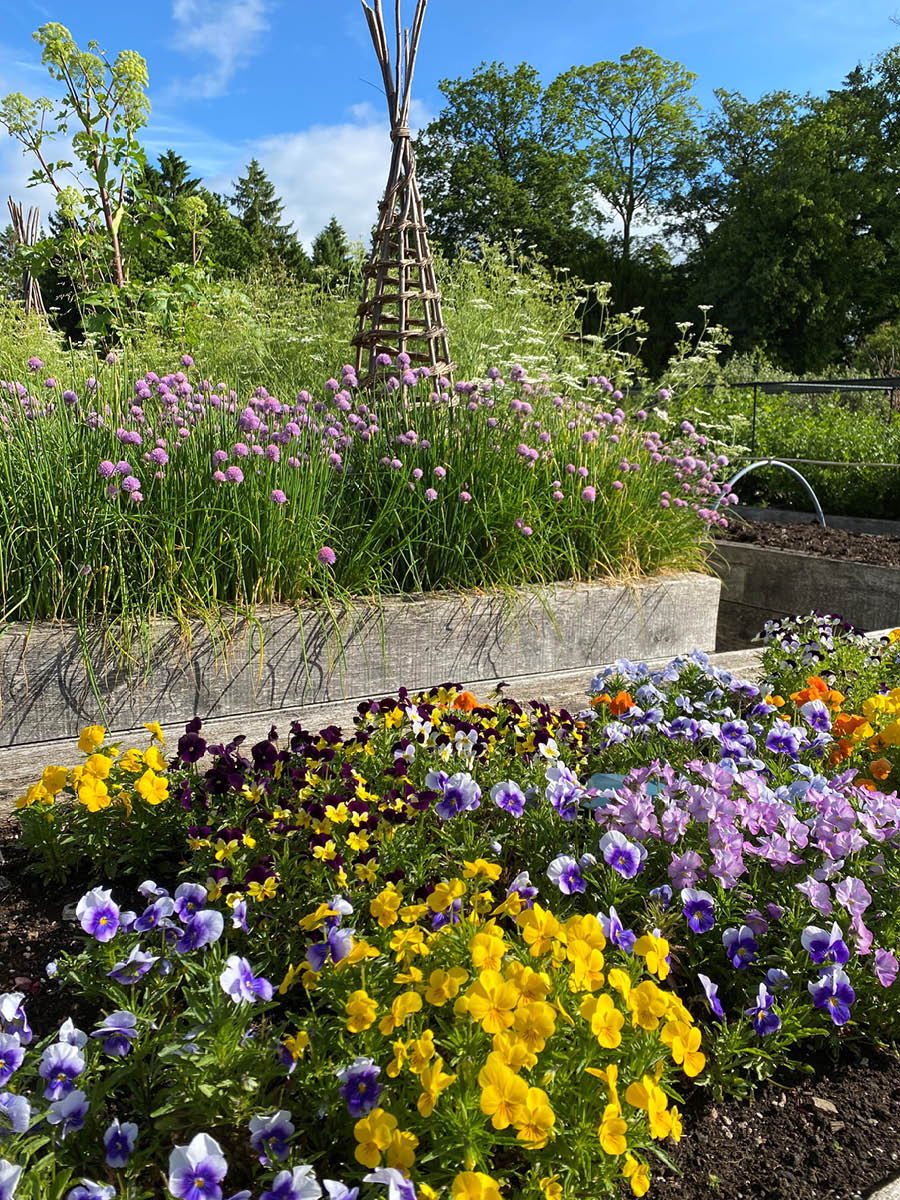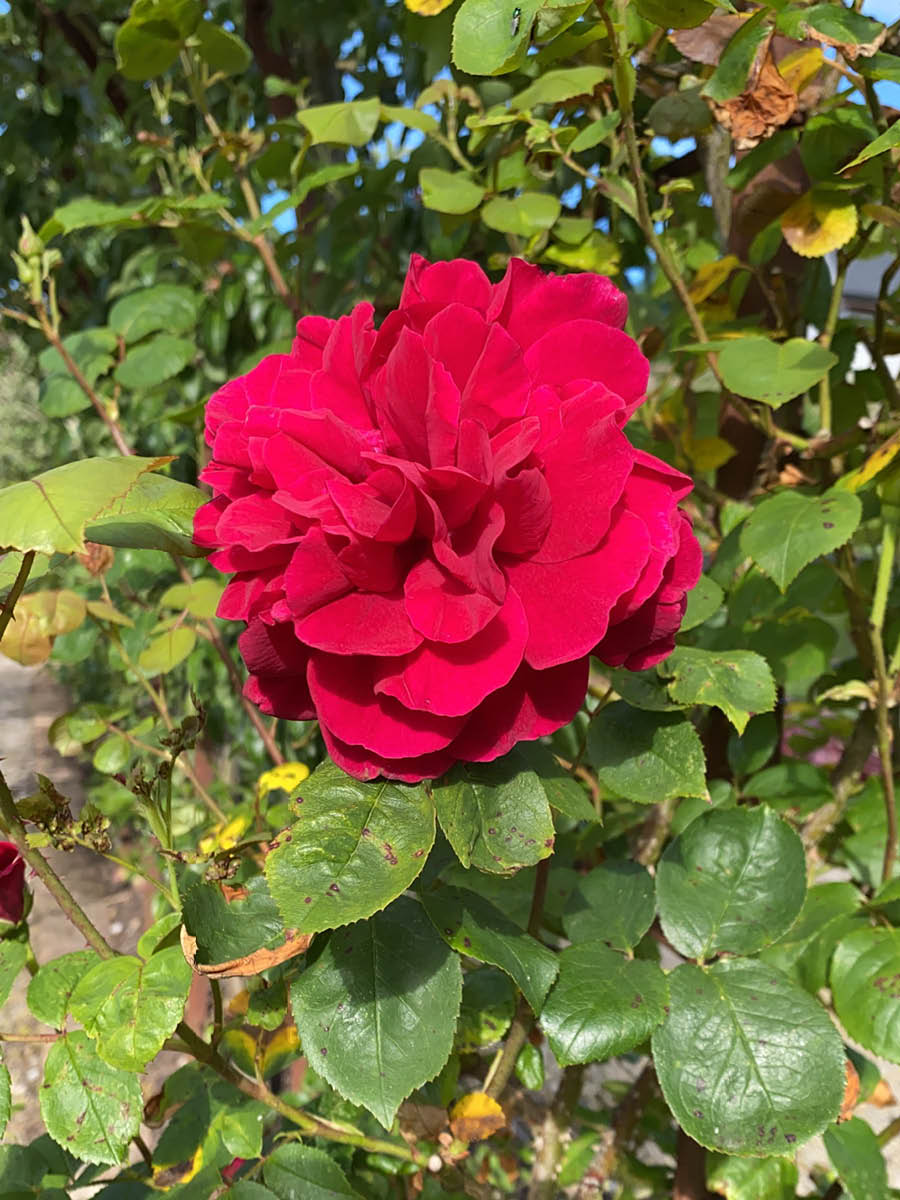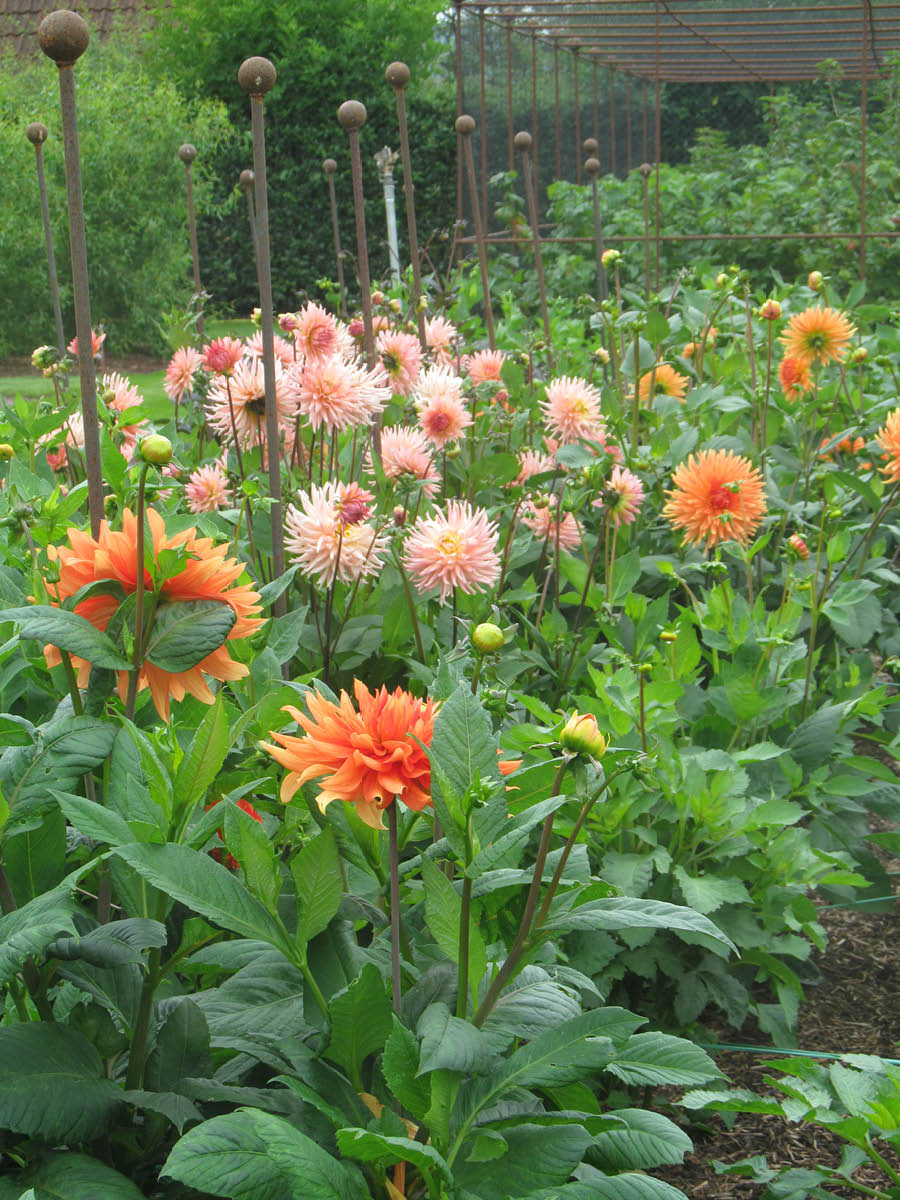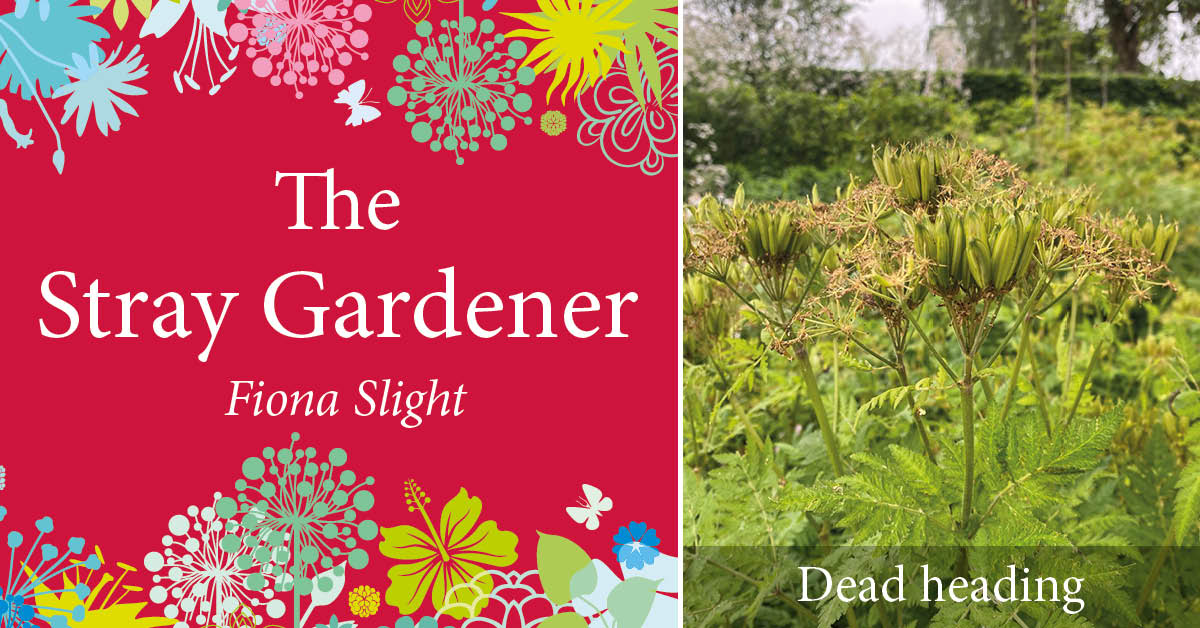 The Stray Gardener is written by Rudding Park’s Kitchen Gardener, Fiona Slight. Fiona has worked in horticulture for more than 30 years in the UK and abroad, and specialises in growing fruit and vegetables for fine dining. This month, Fiona’s been dead-heading her plants; she also shares her top tips for what we should be doing in our gardens this July.
The Stray Gardener is written by Rudding Park’s Kitchen Gardener, Fiona Slight. Fiona has worked in horticulture for more than 30 years in the UK and abroad, and specialises in growing fruit and vegetables for fine dining. This month, Fiona’s been dead-heading her plants; she also shares her top tips for what we should be doing in our gardens this July.
I love the therapeutic effect of dead-heading and would happily spend hours doing it if I could. I especially love dead-heading sweet peas (Lathyrus odoratus), which were one of the first flowers I dead-headed as a child with my great aunt hovering over me, concerned that I wouldn’t do it correctly. Those plants were her pride and joy!
But, is it really worth while spending all that time dead-heading the plants in your garden, and does it need to be done for every plant?
In a nutshell, dead-heading is removing flowers from plants when they are fading or dead. There are a few reasons why this is worthwhile:
- It keeps plants looking good and can encourage more flowers. Sweet peas are a great example of this as they soon set seed and die if you don’t take the old flowers off.
- Dead-heading regularly helps to encourage stronger growth. Once flowers are pollinated, seeds start to form, taking the energy away from more flowers being produced.
- It also helps to avoid petals flying all over the place, making it easier to keep things tidy.
- Dead-heading can also avoid excessive seeding with plants such as lady’s mantle (Alchemilla mollis), sweet cicely (Myrrhis odorata) and angelica, which are all likely candidates for having their flowers removed before seed is set. Unless, of course, you want the extra plants!

Violas and chives
There are many plants that are worth dead-heading, with bedding plants in containers and hanging baskets being the first contenders. Pelargoniums, petunias, pansies, polyanthus, violas and cosmos all benefit from dead-heading. Shrub wise, if you have time, it is well worth dead-heading rhododendrons, azaleas and camellias. Bulbs such as narcissus (daffodils) and tulips also benefit from dead-heading as the plant then directs any energy made back into the main bulb for flowering next year.
Fading or dead flowers can be removed quickly by hand and most will snap off cleanly when gently bent back. But if the flower stalks are tough or stringy, use scissors or secateurs to ensure a clean cut and to avoid damaging any developing buds underneath.
Plants such as dahlias, calendulas, marigolds and sweet peas are generally better cut with secateurs. Fading rose flowers can be snapped off just below the head rather down to the first set of leaves; this can actually help produce more flower buds more quickly on repeat flowering cultivars.

‘Tess of the D’urbervilles’ rose
But before you march out into the garden brandishing your secateurs, you don’t have to dead-head everything. Plants such as fuchsia, bedding lobelia and salvias will either dead-head themselves or don’t tend to produce a lot of seed so will keep repeat flowering. It’s also worthwhile finding out which flowers are good for wildlife. If you leave sunflower heads, the seeds will encourage birds into your garden. There are some cultivars of roses that produce beautiful hips and so are worth keeping for interest through the winter. Lastly, hydrangea flowers are actually best left until spring to protect the developing bud underneath.
If you have never dead-headed before, give it a go and hopefully you’ll find it as therapeutic as I do. Happy snipping!

Dahlias
Five Top Tips for July
- Dead-head fading and dead flowers to keep your containers and hanging baskets looking good.
- Take the side shoots off and tie in your cordon tomatoes to keep them tidy and to ensure the energy goes into flower and fruit formation.
- Liquid feed container plants at least once a week to keep them growing and flowering well.
- Sow biennial plants such as sweet william, foxgloves, honesty and forget-me-nots now for flowering next year.
- Summer prune wisteria at the end of the month and into August. Prune back the young whippy growths to five or six buds to help allow better flower bud formation for next year.
If you want to hear more about the Rudding Park Kitchen Garden, I recommend subscribing to the Rudding Park Podcast. It provides a fascinating and entertaining insight into stories from Rudding Park and I recently joined host Peter Banks for whether the chat focuses on gardens, golf and gin – a great combination!
Enjoy!
Read More:





